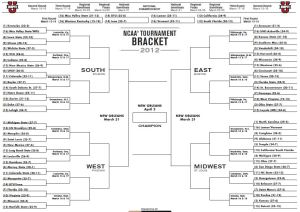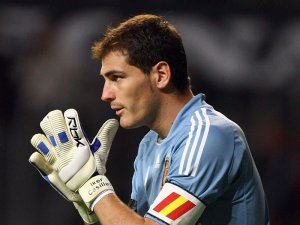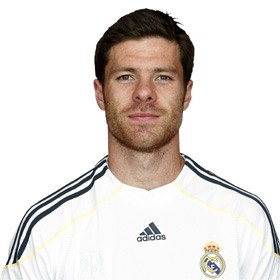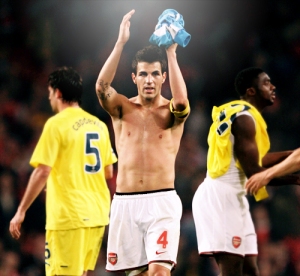Last Sunday, the PBA Governor’s Cup finals between Rain or Shine
Elasto Painters and B-MEG Llamados took off to an exciting start. There
was a great deal of pushing and shoving between players, technical fouls
were called one after another, there were plenty of not-so-nice words
exchanged, and a monobloc chair was thrown onto the court.
You can’t be bothered to care, really, but this presents an impending
predicament: no thanks to this rather titillating Game One, your
boyfriend is now pumped up for Game Two, and it looks like your usual
quiet Wednesday dinner date is going to take a raincheck. And it’s a
bigger problem, when he says, “Hey, this should be an exciting series.”
Then count out your Friday and Sunday soirees as well.
Let’s face it. Not all girlfriends are created equal. Some are more
understanding of their boo’s obsession with watching grown men chase and
shoot a ball, while others sit at the end of the sofa, arms crossed and
an eyebrow raised, everytime their boyfriends have the telly tuned to
basketball.
It’s not a crime not to love sports, ladies. But since you’re with
someone who eats, breathes, and thrives with the excitement sports bring
him, you might want to come to terms with it.
Showing posts with label guide. Show all posts
Showing posts with label guide. Show all posts
Wednesday, July 25
Thursday, June 14
SATG's Guide: Smoking Hot Reasons to Watch Euro 2012 (Part 2)
Spending some sleepless nights myself catching Euro 2012 on TV. I blame these European men with their funny accents and hard-board abs! Ladies, can anybody tell me why European men are so hot?!?
(Part One HERE.)
Monday, June 11
SATG's Guide: Smoking Hot Reasons to Watch Euro 2012 (Part 1)
The Euro 2012 has started last week and millions of football fans around the world are sacrificing sleep (thanks to the time difference!), work and other essentials to be able to watch the games on their own little corner of the planet. And if your man is one of those, you may want to lend some solidarity by catching the occasional match too.
Ladies, even if you're not a football fan, here's the lowdown of some of the smoking hot reasons you can enjoy the Euro 2012! :)
(Read Part Two HERE.)
Monday, March 12
SATG’s Guide to NCAA: March Madness and Bracketology 101

Seriously, stay with me as I bestow a few little nuggets of bracketing wisdom I picked between ‘Oooh I like that team’s colors!’ and ‘That point guard is really cute!’ to ‘What does Joe Lunardi have to say about this?’
What is March Madness?
March Madness, or The Big Dance, is the name given by the powers that be referring to the madness that goes along with the NCAA Men’s Basketball Division I Championship Tournament–an annual single elimination tournament featuring 65 college basketball teams. They are divided into four regions namely South, East, West and Midwest Regions. Why there’s no North, I have absolutely no idea. The games are spread and played over three weeks in different ‘neutral’ areas across the USA.
On ‘Selection Sunday,’ the NCAA Selection Committee (yes, there is such a thing) announces the 68 teams that are qualified for the tournament and ‘seeds’ them according to their ranking and performance (1-16). I’m not going to insult your intelligence so it goes without saying that 1 is ‘better’ than 16.
What is bracketing?
Bracketing is the style adopted by the tournament in organizing what teams will go against each other. As discussed above, the 68 teams that are participating are seeded or ranked from 1-16 for each of the four regions. After which, the bracketing is arranged. The #1 seeded team is pitted against the #16 team, the #2 against #15, the #3 against #14, ETC. The winners of the first round will be pitted against each other and so on.
The third round is called ‘Sweet Sixteen‘, the fourth ‘Elite Eight‘ and the fifth ‘Final Four‘–all corresponding the number of teams left in the particular round.
Bracketology, on the other hand, is the process of picking or predicting which teams will move forward in the tournament before it even begins. This is typically done on Selection Sunday itself, although can be finished before the first game of the tournament is played. Below is the bracket for this year’s NCAA Division I Men’s Basketball Championship Tournament.
(Click to enlarge)
Ah, we have come to the most exciting part of this tutorial: filling out your brackets. As you can see in the image above, only the first round of the bracket is filled. These are the 65 teams that I have talked about earlier in this post. It is your job to predict the winners of the second round moving forward to the ultimate champion of the tournament as accurately as possible. If there’s one thing great about this tournament is that it packs a lot of drama in the short span of time it is on. The tournament is rife with upsets year after year. It basically puts the ‘madness‘ in March Madness. Since this is a single elimination competition, expect that each team will give it their best, there being no second chances.
Every once in a while, and in many dances that we go to, Cinderella shows up. In March Madness speak, Cinderella is the term used to call a team that’s not expected to win but advances through the tournament. Or in layman’s term, it is simply called an upset. But hey, we like to use Cinderella because this is, after all, the Big Dance.
So, before filling out your bracket sheet, you may want to consider the following basics in Bracketology for Women 101 (also known as the course for women who can’t be bothered to look up those boring stats):
1. In the history of the tournament, never has a #16 team win over a #1 team in the first round. I repeat, NEVER HAS A #16 TEAM WIN OVER A #1 TEAM IN THE FIRST ROUND. Go ahead and advance all the #1 seeded teams through second round. However, it’s not entirely taboo to pick a Cinderella as early as the first round, especially with teams seeded from 9 through 12. Rarely pick a #13 seed or lower to win in the second round. Only 9% of teams advancing past second round are seeded that low.
2. Speaking of #9, some believe that such seed is luckier against #8. The former tend to do better that the latter. So if you have to choose between the two, odds are more in favor of #9.
3. Play safe, woman! Stick to the big names and take into consideration their ranking. It isn’t put there for decorations. But, if you have absolutely ZERO idea whether a team is ‘big’ or not or if you are stuck between two teams, feel free to pick the team based on who has the better looking uniforms. Or cuter mascot. Or cuter players. Or if you’re hardcore, the team with the cuter coach.
4. Trust your womanly intuition! Knowledge isn’t necessarily power. Most guys spend hours, nay days, in perfecting their brackets. They do tons of research, watch ESPN every chance they get, read sports blog and pay hefty sums of money just to get a glimpse of Joe Lunardi’s ‘Inside’ bracket guide. On the other hand, many girls randomly select their brackets largely based on their gut feelings. How awesome would it be to beat these guys who have devoted so much time and effort into winning and hold it over their heads?
5. Get into it and make it fun! This is a really fun way to engage with the man in your life. Stakes are a great way to make it more personal. Throw down some girly stakes, most likely he will bite.
Watch and enjoy the games; ogle at those muscles and cute point guards. Take part in a pool. Who knows, it can be the source of next month’s shopping money. So, stop being a party pooper and join the March Madness festivities. You won’t regret it. In the words of legendary college hoops analyst Dick Vitale “It’s awesome, baby!”
Friday, March 2
Fat Girls’ Guide to Running: The Fat Runner’s Couch-to-5K training plan
When I first started running in late
October of last year, I didn’t have any solid training plans, didn’t
read any manual/advice on running with an overweight body, nor did I
have any idea how I’m going to do it. I just remember waking up one
morning and telling myself ‘This is it.’ Honestly, I didn’t think I’d
last a full week doing the routine of waking up at 5AM and heading out
to run. Trust me, I’m that lazy.
But I overcame the laziness (HA! Take that, Bruno Mars!) and after a month, ran my first ever 5K race. However, I had a little accident a week ago which left me unable to do my usual routine. Haven’t had a decent run in 7 days, so technically I am in one might call a ‘slump’. Just yesterday, the doctor gave me a go signal that I can carry on with running and tried to on that evening. Oh boy, it felt like I haven’t run in ages. The dreadful has happened: I am back to square one.
As the diligent and resourceful blogger that I am (wink), I have scoured the world wide web to look for a training regimen I could follow to get me back on track. I stumbled upon Cool Running’s Couch-to-5K Running Plan. Read through it and it’s a pretty good training plan. Decided to follow it and put a few tweaks to the plan.
Basically, I have shortened it to 7 weeks (instead of 9) and do the routine between 30-45 minutes 4-5 times a week (instead of 3). I have also incorporated short distance running on weekdays and long ones for weekends. If you are a first time runner, you can try this training plan with me, because if I can do it, so can you! ))
))
The first step to this plan is COMMITMENT. The start of everything is the hardest, but you have to decide that NOW is the best time. Saying YES to this training plan is already a fourth of the battle. Decide to commit to begin with it and stick through it and half of the battle is won.
For the next few weeks, this is the routine you and I need to follow:
**Do stretching each and every time you begin your training**
**Alternate run days with your rest days. (Eg. Mon-run, Tue-rest, Wed-run, Thu-rest, Fri-run, Sat-rest, Sun-run)
WEEK ONE: DAYS 1, 2, & 3: Start with a 5-minute brisk walk for warm-up, then alternate 60 seconds of running with 90 seconds of walking. Bring your total minutes to 30 minutes. (You do 15 rounds of walking and 10 rounds of jogging, ALTERNATELY.) DAY 4: Do the same routine for 45 minutes.
WEEK TWO: DAYS 1, 2, & 3: Start with a 5-minute brisk walk for warm-up, then alternate 90 seconds of running with 2 minutes of walking. Bring your total minutes to 30 minutes. DAY 4: Do the same routine for 45 minutes.
WEEK THREE: DAYS 1, 2, & 3: Start with a 5-minute brisk walk for warm-up, then alternate 2 minutes of running with 60 seconds of walking. Bring your total minutes to 30 minutes. DAY 4: Do the same routine for 45 minutes.
WEEK FOUR: (This is tricky, but you’ll get it) DAYS 1, 2, & 3: Start with a 5-minute brisk walk for warm-up, then alternate 2 minutes of running and 1 minute of walking with 3 minutes of running and 2 minutes of walking. (2 min run, 1 min walk, 3 min run, 2 min walk x 5) Bring your total minutes to 40 minutes. DAY 4: Run/walk freely with a 3K distance.
WEEK FIVE: DAYS 1, 2, & 3: Start with a 5-minute brisk walk for warm-up, then alternate 3 minutes of running and 1.5 minutes of walking with 5 minutes of running and 2.5 minutes of walking. (3 min run, 1.5 min walk, 5 min run, 2.5 min walk x 3) Bring your total minutes to 36 minutes. DAY 4: Run/walk freely with a 3K distance.
WEEK SIX: DAYS 1, & 2: Start with a 5-minute brisk walk for warm-up, then alternate 5 minutes of running and 2 minutes of walking with 8 minutes of running and 3 minutes of walking. (5 min run, 2 min walk, 8 min run, 3 min walk x 2) Bring your total minutes to 36 minutes. DAYS 3 & 4: Alternate running for 15 minutes with walking for 3 minutes x 2. Bring your total minutes to 36 minutes.
WEEK SEVEN: DAYS 1 & 2: Start with a 5-minute brisk walk for warm-up, then alternate 10 minutes of running and 2 minutes of walking with 15 minutes of running and 3 minutes of walking. Bring your total minutes to 35 minutes. DAYS 3 & 4: Alternate running for 20 minutes with walking for 3 minutes x 2. Bring your total minutes to 46 minutes.
In following this training plan, keep the following in mind:
 )
)
- TFR
Follow The Fat Runner on Tumblr @ http://thefatrunner.tumblr.com
(Originally posted at http://thefatrunner.tumblr.com/post/14208945032/couch25k)
But I overcame the laziness (HA! Take that, Bruno Mars!) and after a month, ran my first ever 5K race. However, I had a little accident a week ago which left me unable to do my usual routine. Haven’t had a decent run in 7 days, so technically I am in one might call a ‘slump’. Just yesterday, the doctor gave me a go signal that I can carry on with running and tried to on that evening. Oh boy, it felt like I haven’t run in ages. The dreadful has happened: I am back to square one.
As the diligent and resourceful blogger that I am (wink), I have scoured the world wide web to look for a training regimen I could follow to get me back on track. I stumbled upon Cool Running’s Couch-to-5K Running Plan. Read through it and it’s a pretty good training plan. Decided to follow it and put a few tweaks to the plan.
Basically, I have shortened it to 7 weeks (instead of 9) and do the routine between 30-45 minutes 4-5 times a week (instead of 3). I have also incorporated short distance running on weekdays and long ones for weekends. If you are a first time runner, you can try this training plan with me, because if I can do it, so can you!
The first step to this plan is COMMITMENT. The start of everything is the hardest, but you have to decide that NOW is the best time. Saying YES to this training plan is already a fourth of the battle. Decide to commit to begin with it and stick through it and half of the battle is won.
For the next few weeks, this is the routine you and I need to follow:
**Do stretching each and every time you begin your training**
**Alternate run days with your rest days. (Eg. Mon-run, Tue-rest, Wed-run, Thu-rest, Fri-run, Sat-rest, Sun-run)
WEEK ONE: DAYS 1, 2, & 3: Start with a 5-minute brisk walk for warm-up, then alternate 60 seconds of running with 90 seconds of walking. Bring your total minutes to 30 minutes. (You do 15 rounds of walking and 10 rounds of jogging, ALTERNATELY.) DAY 4: Do the same routine for 45 minutes.
WEEK TWO: DAYS 1, 2, & 3: Start with a 5-minute brisk walk for warm-up, then alternate 90 seconds of running with 2 minutes of walking. Bring your total minutes to 30 minutes. DAY 4: Do the same routine for 45 minutes.
WEEK THREE: DAYS 1, 2, & 3: Start with a 5-minute brisk walk for warm-up, then alternate 2 minutes of running with 60 seconds of walking. Bring your total minutes to 30 minutes. DAY 4: Do the same routine for 45 minutes.
WEEK FOUR: (This is tricky, but you’ll get it) DAYS 1, 2, & 3: Start with a 5-minute brisk walk for warm-up, then alternate 2 minutes of running and 1 minute of walking with 3 minutes of running and 2 minutes of walking. (2 min run, 1 min walk, 3 min run, 2 min walk x 5) Bring your total minutes to 40 minutes. DAY 4: Run/walk freely with a 3K distance.
WEEK FIVE: DAYS 1, 2, & 3: Start with a 5-minute brisk walk for warm-up, then alternate 3 minutes of running and 1.5 minutes of walking with 5 minutes of running and 2.5 minutes of walking. (3 min run, 1.5 min walk, 5 min run, 2.5 min walk x 3) Bring your total minutes to 36 minutes. DAY 4: Run/walk freely with a 3K distance.
WEEK SIX: DAYS 1, & 2: Start with a 5-minute brisk walk for warm-up, then alternate 5 minutes of running and 2 minutes of walking with 8 minutes of running and 3 minutes of walking. (5 min run, 2 min walk, 8 min run, 3 min walk x 2) Bring your total minutes to 36 minutes. DAYS 3 & 4: Alternate running for 15 minutes with walking for 3 minutes x 2. Bring your total minutes to 36 minutes.
WEEK SEVEN: DAYS 1 & 2: Start with a 5-minute brisk walk for warm-up, then alternate 10 minutes of running and 2 minutes of walking with 15 minutes of running and 3 minutes of walking. Bring your total minutes to 35 minutes. DAYS 3 & 4: Alternate running for 20 minutes with walking for 3 minutes x 2. Bring your total minutes to 46 minutes.
In following this training plan, keep the following in mind:
- Assess yourself. None of these weeks will be easy, but you have to keep trying and trying. If you fail a week, don’t hesitate to repeat it. It doesn’t matter if you fall off schedule, as long as you finish the whole plan.
- Take it easy. You will feel terrible body aches especially at the beginning, so take two successive rest days if you must. You will also feel that you can run in successive days sometimes. If you are fit, then it might be okay. But if you are on the heavy side, take precaution and watch out for injuries.
- Stretching is very important to prevent injuries. Don’t forget to do this before beginning any workout.
- Hydrate, hydrate, hydrate.
- And most importantly… HAVE FUN! Load up your iPod with songs that can carry you through the long runs and have a friend do this program with you.
- TFR
Follow The Fat Runner on Tumblr @ http://thefatrunner.tumblr.com
(Originally posted at http://thefatrunner.tumblr.com/post/14208945032/couch25k)
Tuesday, February 21
SATG's Guide to Football: Player Positions (Defense)
There are 11 players for each team in a regular FIFA-sanctioned
football (or soccer, whichever hemisphere you live on) game. Here’s a
look at the players who are responsible for the keeping the defensive
side alive and kicking.
THE DEFENSE
The guy with the funky colored gloves on who stands between the goal posts, and the only person on the pitch that can use his hands. He is responsible for blocking the shots heading on goal, using his hands, legs, face, or pretty much any other body part needed to deflect the ball, because in essence, he is the last line of defense. In football team pictures, he is the only person wearing a different colored kit.
Famous keepers:
They are positioned near their own team’s goal and their main job is to defend the goal against the opposing team scoring against them. Football players in this position have the job of taking return balls from the goalie as well as getting the ball to their midfielders.
Famous full backs:
The players who guard the area directly in front of the goal. Since they stand right in front of the goalkeeper, they cannot afford to make any mistake; therefore they are often considered to be the the strongest defenders. They are also responsible for man-to-man marking (guard the attacking player directly) and zonal defense (guard a particular area of the pitch).
Famous centre backs:
The player positioned just in front of their team’s defense (or at the midfield) and often assigned to mark the opposition’s best offensive player.
THE DEFENSE
- Goalkeeper (GK)
The guy with the funky colored gloves on who stands between the goal posts, and the only person on the pitch that can use his hands. He is responsible for blocking the shots heading on goal, using his hands, legs, face, or pretty much any other body part needed to deflect the ball, because in essence, he is the last line of defense. In football team pictures, he is the only person wearing a different colored kit.
Famous keepers:
Iker Casillas (Real Madrid, Spain)
Carlo Cudicini (Tottenham Hotspur, Italy)
- Full backs (FB, RB, LB)
They are positioned near their own team’s goal and their main job is to defend the goal against the opposing team scoring against them. Football players in this position have the job of taking return balls from the goalie as well as getting the ball to their midfielders.
Famous full backs:
Philipp Lahm (Bayern Munich, Germany)
Maicon (Internazionale, Brazil)
Dani Alves (FC Barcelona, Brazil)
- Centre backs (CB)
The players who guard the area directly in front of the goal. Since they stand right in front of the goalkeeper, they cannot afford to make any mistake; therefore they are often considered to be the the strongest defenders. They are also responsible for man-to-man marking (guard the attacking player directly) and zonal defense (guard a particular area of the pitch).
Famous centre backs:
Gerard Pique (FC Barcelona, Spain)
Nemanja Vidic (Manchester United, Serbia)
Carlos Bocanegra (Rangers, USA)
- Defensive Midfielders (DM)
The player positioned just in front of their team’s defense (or at the midfield) and often assigned to mark the opposition’s best offensive player.
Xabi Alonso (Real Madrid, Spain)
Nigel De Jong (Manchester City, Netherlands)
Sex–I mean–Cesc Fabregas (FC Barcelona, Spain)
Steven Gerrard (Liverpool, England)
Thursday, February 16
SATG's Guide to Basketball: The 2012 NBA All Star Weekend
The annual NBA All-Star Weekend is just around the corner. And being
the good girlfriend that you are, why don’t you stay in and watch with
your honey boy? Here are some NBA All Star essentials you need to know
to survive this weekend.
What is the NBA All Star Weekend all about?
It is an annual two-day event held every February showcasing the best of the best NBA players from the Eastern and Western conferences. The usual highlights are the three-point shoot-out, slam dunk contest, skills challenge, and mainly the All Star exhibition game between the players from East and West. A celebrity game is also featured. (Last year, Justin Bieber played. Wonder who is up to the challenge this year?)
Think of it like a benefit concert where all of your favorite artists come together to play in one stage. That’s basically what the NBA All Star is about.
Who will be playing and how were they selected?
East: (Starters, pictured L-R) Derrick Rose, Lebron James, Dwight Howard, Carmelo Anthony, and Dwayne Wade (Reserves, not pictured) Luol Deng, Joe Johnson, Deron Williams, Paul Pierce, Chris Bosh, Roy Hibbert, andAndre Iguodala.
West: (Starters, pictured L-R) Kobe Bryant, Blake Griffin, Andrew Bynum, Kevin Durant, and Chris Paul (Reserves, not pictured) Russel Westbrook, Kevin Love, LaMarcus Aldridge, Dirk Nowitzki, Steve Nash, Tony Parker, and Marc Gasol.
The starters (the five-man team that plays at the start of the game) are chosen by fan voting, while the reserves (substitution players) are chosen by a vote of the coaches in each conference.
What’s the best thing to watch out for?
Everybody who have constantly been watching the All Stars will tell you that the best thing about it is the Slam Dunk Contest. You’ll surely have fun with that. Things go pretty crazy during slam dunk contests.
The players are graded, 10 being the highest, by 5 judges. Whoever gets the highest points (usually the craziest dunk) wins.
Things you could say while watching the All-Star Game aside from “Their uniforms look great”:
“Frankly, I’d rather see Chris Bosh start than Melo.”
“We could send the West’s line up to the Olympics and they’re sure to win gold.”
“Kevin Love was robbed. Again.”
“This just might be Steve Nash’s last All Star.”
“Mike Brown shouldn’t have allowed Bynum to start! That boy is one sprain away from retirement.”
“I wish the West had a decent center.”
“Deng! He’s good!”
“How Monta Ellis was not included is beyond travesty.”
Key Trivias:
- This will be Kobe Bryant’s 14th All-Star appearance, tying the record with Jerry West and Karl Malone. Also, the most among any of the other players in the All Star roster this year.
- Marc Gasol, Lakers’ Pau Gasol’s younger brother is making his first All-Star appearance.
- The Eastern Conference All-Stars lead the all-time series 36–24.
What is the NBA All Star Weekend all about?
It is an annual two-day event held every February showcasing the best of the best NBA players from the Eastern and Western conferences. The usual highlights are the three-point shoot-out, slam dunk contest, skills challenge, and mainly the All Star exhibition game between the players from East and West. A celebrity game is also featured. (Last year, Justin Bieber played. Wonder who is up to the challenge this year?)
Think of it like a benefit concert where all of your favorite artists come together to play in one stage. That’s basically what the NBA All Star is about.
Who will be playing and how were they selected?
East: (Starters, pictured L-R) Derrick Rose, Lebron James, Dwight Howard, Carmelo Anthony, and Dwayne Wade (Reserves, not pictured) Luol Deng, Joe Johnson, Deron Williams, Paul Pierce, Chris Bosh, Roy Hibbert, andAndre Iguodala.
West: (Starters, pictured L-R) Kobe Bryant, Blake Griffin, Andrew Bynum, Kevin Durant, and Chris Paul (Reserves, not pictured) Russel Westbrook, Kevin Love, LaMarcus Aldridge, Dirk Nowitzki, Steve Nash, Tony Parker, and Marc Gasol.
The starters (the five-man team that plays at the start of the game) are chosen by fan voting, while the reserves (substitution players) are chosen by a vote of the coaches in each conference.
What’s the best thing to watch out for?
Everybody who have constantly been watching the All Stars will tell you that the best thing about it is the Slam Dunk Contest. You’ll surely have fun with that. Things go pretty crazy during slam dunk contests.
The players are graded, 10 being the highest, by 5 judges. Whoever gets the highest points (usually the craziest dunk) wins.
Things you could say while watching the All-Star Game aside from “Their uniforms look great”:
“Frankly, I’d rather see Chris Bosh start than Melo.”
“We could send the West’s line up to the Olympics and they’re sure to win gold.”
“Kevin Love was robbed. Again.”
“This just might be Steve Nash’s last All Star.”
“Mike Brown shouldn’t have allowed Bynum to start! That boy is one sprain away from retirement.”
“I wish the West had a decent center.”
“Deng! He’s good!”
“How Monta Ellis was not included is beyond travesty.”
Key Trivias:
- This will be Kobe Bryant’s 14th All-Star appearance, tying the record with Jerry West and Karl Malone. Also, the most among any of the other players in the All Star roster this year.
- Marc Gasol, Lakers’ Pau Gasol’s younger brother is making his first All-Star appearance.
- The Eastern Conference All-Stars lead the all-time series 36–24.
Subscribe to:
Posts (Atom)

















